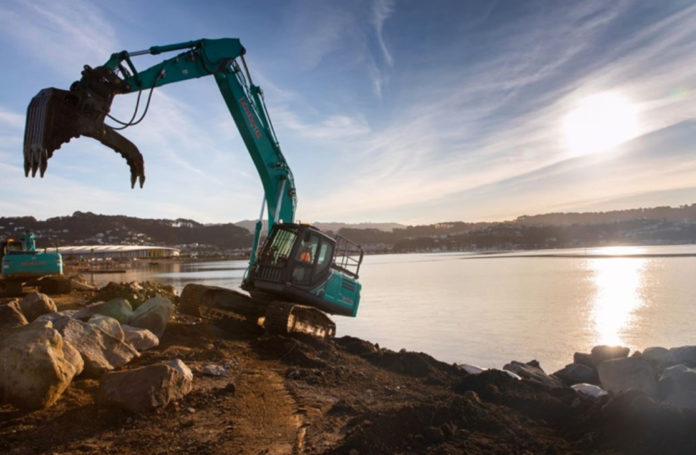The transformation of Wellington City Council’s Cobham Drive and contractor, Downer NZ, have taken out the prize for best public works project over $5 million at the recent IPWEA New Zealand awards.
The annual Institute of Public Works Engineering Australasia NZ awards are a celebration and recognition of people, teams and projects from all over the motu.
The institute says all the winning projects have made a noticeable positive impact on communities in Aotearoa.
Wellington’s entry saw new paths and landscaped areas form part of Tahitai, the coastal walking and biking connection from Te Motu Kairangi (Miramar Peninsula).
Funded by Wellington City Council in partnership with Waka Kotahi, the project was a team effort involving Taranaki Whānui, Places for Penguins, Predator Free Miramar, the Department of Conservation, penguin detection dog Mena and handler Alastair Judkins from the Kaikoura Ocean Research Institute, Greater Wellington, local schools, community groups and organisations, and many others.
Council says Downer NZ’s construction crews, supported by sub-contractors, worked in harsh conditions at times during the project.
“They navigated challenges, including the first COVID-19 lockdown, to deliver the award-winning project,” Council said in a statement.
The area is reclaimed land and the project included carefully removing more than 400 truckloads of bricks, rusting steel, concrete and other demolition materials from the foreshore and seabed. It also included the construction of a new engineered rock bank (revetment) designed by Tonkin and Taylor to help protect the road from storm damage, and provide safer places for kororā (little blue penguins) to nest.
Council said crews worked hard to protect and respect the coastal environment, managing jobs that could only be done at certain tides, and working around penguin nesting and resting seasons with great vigilance and care.
Every day before work began, workers checked for penguins that might have taken refuge over night. They looked under and around vehicles, and in areas where rock was being moved using torches when necessary, and a special camera to see deep into crevices.
Designed by Isthmus in collaboration with Taranaki Whānui, and Calibre, the project has a number of landscaped areas, including the area near the Evans Bay marina, which features the name Te Awa-a-Taia.
The name used for the area that is now Kilbirnie is an acknowledgment that Lyall Bay and Kilbirnie were once part of the sea. Te Awa-a-Taia was the name for the channel of water, or second harbour entrance, which originally separated Te Motu Kairangi from the mainland.



